#clockpunk
Text
The Punk-Factor of Punkpunk Genre
So, when I posted my history of Solarpunk, someone (probably not in good faith) asked: “So, what about the punk in all the other punk genres?!” towards my request to put the punk back into Solarpunk. And given that my autistic brain obviously cannot just let that stand… You know what? Let me talk about the other punk genre and in how far they are “punk”. I tried to be as exhaustive as possible, though there is a good chance, that I might have missed some of the punkpunk genre. So feel free to add.
Trying to judge the punkiness I do not assume punk as simple counter culture, but a specific ideology. Quote from Wikipedia:
[Punk ideology] is primarily concerned with concepts such as mutual aid, against selling out, hierarchy, white supremacy, authoritarianism, anti-consumerism, anti-corporatism, anti-war, imperialism, conservatism, anti-globalization, gentrification, anti-racism, anti-sexism, class and classism, gender equality, racial equality, eugenics, animal rights, free-thought and non-conformity
Most of the artwork here has been taken from concept art of either of the examples listed.
Sorted from most futuristic to pre(historic). Yes, the list is long.

Cyberpunk
We start with the OG punk genre, the one after which all other punk genre were named. Yes, you could argue that in fact the two genre following are more futuristic – but Cyberpunk kinda just had to start the list.
As a genre: Given that Cyberpunk had its start completely in literature it is the best defined in this regard. Taking place in a late stage capitalist dystopian world in which most is owned by megacorps who don’t follow anyone’s laws but their own, the protagonists usually are social outcasts fighting against their own oppression, trying to keep themselves alive in a world hostile to them. With cybernetics always being a core of the genre, it also tends to deal with the question of humanity in a “ship of Theseus” sort of way. How much can the human body be altered, before the human vanishes?
As an aesthetic: Cyberpunk is the most punk in terms of aesthetics, really. There is a lot of punk and grunge going on in terms of character design. Neon hair colors, fishnets and thorn up jeans jackets can be found here. As well as of course cybernetics on the characters. The world usually is a megacity with a stark divide between rich and poor, tons of neon signs, a slight Japanese influence, flying cars and somehow a constant downpour of rain.
Punk-Factor: Cyberpunk is the one punk genre, where the “punk” was chosen very knowingly as a name. Usually the protagonists are “punks” fighting for their place in the world against a suppressive capitalist system. (Also, they usually fit the punk aesthetic, if they don’t wear leather dusters.) It should be noted however, that especially in newer western Cyberpunk often the punkiness vanishes more and more – for the same reason we have so little Solarpunk: media that outright confronts the problems of capitalism is just less supported.
Examples: Neuromancer (1984), Mirrorshades: The Cyberpunk Anthology (1986), Snow Crash (1992), The Matrix (1999), Dredd (2012)

Biopunk
As a genre: As a genre biopunk is still fairly ill defined, as it mostly shows up as a subsection of Cyberpunk. Rather than the characters having cybernetic implants (or additionally to it) they are augmented on a genetic level. This can be all sorts of augmentations, changing anything from appearance to giving characters higher strength and agility, giving them claws or night vision, or in some cases even “magic” powers. Usually the genre tends to be set in worlds similar to Cyberpunk. In fact it might well be set in a cyberpunk world, only that characters with bioaugmentations exist parallel to those with cybernetics. Additionally, though, there is a subsection of this genre, that concerns reproductive rights.
As an aesthetic: Ironically biopunk is even less defined as an aesthetic. There is not a lot of biopunk art out there and most that exists can go in different directions. As such it often mixes elements from other punk aesthetics – like Cyberpunk, Steampunk or Dieselpunk – with an assortment of bodyhorror elements.
Punk-Factor: It is hard to define the “punkiness” of a genre, that barely exists for the most part. Usually, when it is set against a Cyberpunk backdrop, it might be very punky, but in other settings those punk elements vanish.
Examples: Ribofunk (1995), Altered Carbon (2002), Bioshock (2007), The Windup Girl (2009)

Nanopunk
As a genre: Like Biopunk Nanopunk mostly exists as a subsubgenre to Cyberpunk, often being set in a mostly Cyberpunk world, only that instead of or additionally to Cybernetics, the technology used to alter the human body is nanites. These serve the same function as the genetic manipulation in Biopunk, giving the human in question more strength and agility and at times more or less magical abilities. There is one common plot that comes up again and again, with an AI or megacorp turning the nanites against the people they inhabit or trying to control them.
As an aesthetic: Aesthetically Nanopunk does not have much in terms of its own identity. Most artworks relating to Nanopunk feature a similar aesthetic to Cyberpunk, with megacities and lots of neon.
Punk-Factor: This genre is so small, that it is kinda hard to judge the exact punkiness.
Examples: The Diamond Age (1995), Prey (2002)

Solarpunk
As a genre: Being another genre, that started as such, Solarpunk is a bit better defined. Solarpunk usually takes place in a world post-strive. It is post-capitalist and decolonial in its settings, usually featuring a world that has either formed against the backdrop of preventing climate collapse or in the aftermath of it. A lot of it features people rebuilding – or alternatively building communities. It always features elements about living in harmony with nature or trying to do so. So far, the genre is mostly defined by short stories, partly because there is still disagreements within the movement, how far a conflict can be taken to still qualify as Solarpunk.
As an aesthetic: Solarpunk has a very strong aesthetic definition, mostly featuring all sorts of cities and urban areas, that incorporate natural elements into the urbanity, with greenery growing on roofs and concrete car-centric streets being replaced with more natural, walkable areas. The character design aesthetic is not quite as clearly defined, but usually features natural materials and patterns usually seen within indigenous art.
Punk-Factor: Contrary to what many say, Solarpunk is fairly punk, as it very much embraces the entire anti-hierarchical, anti-capitalist mentality. With the big difference, that the punk mentality is no longer counter culture, but the mainstream culture.
Examples: The Dispossessed (1974), Nausicaä (1984), Laputa – Castle in the Sky (1986), Princess Mononoke (1997), The Summer Prince (2013)

Lunarpunk
As a genre: Lunarpunk is pretty much a subsubgenre of Solarpunk, just as Nanopunk and Biopunk are sprung off from Cyberpunk. It is so far ill-defined as a genre, but the general consensus is, that it is set in solarpunk-esque worlds, but with a heavier focus on mysticism or spiritualism, at times outright including magic. It also tends to feature a lot darker places, being set in underwater or underground settings – or alternatively at night.
As an aesthetic: Lunarpunk is far more of an aesthetic than a genre so far. It features dark places, often with bioluminescent elements in it. Often featuring a mixture of black and dark blue with lighter blue, violet or light green elements shining in the middle of it. Mushrooms – especially glowing mushrooms – feature repeatedly in artwork.
Punk-Factor: Given that Lunarpunk is barely defined as a genre it is hard to estimate the punkiness in it. If it gets more stories, will those still feature the anti-capitalist and anti-hierarchical messaging we see in Solarpunk? This should be the defining factor. Some of the artworks use little aesthetics from the punk scene, but nothing much more.
Examples: Bioluminescent: A Lunarpunk Anthology (2023)

Hopepunk
Honestly, I had no idea where to put this one, given that it might technically be set at any time and place.
As a genre: Hopepunk is very much a genre, not an aesthetic. It has been defined as the opposite of grimdark by its “inventor/name-giver” Alexandra Rowland. The basic idea is to create fiction that instead of taking a dystopian, defeatist and violent approach, takes one defined by hope and to some degree pacifism. As such the genre can be set in any setting, real or fantastic. It mostly is defined by the protagonists taking opposition to cruelty and violence, fighting for a better world and, crucially, also partly archiving it. Other than in usual Cyberpunk, where the best possible ending, tends to be, that the protagonists get to live a somewhat better life themselves, Hopepunk aims to better the life at least for groups of people.
As an aesthetic: Being fully a genre, Hopepunk has no aesthetic associated with it.
Punk-Factor: Hopepunk is punk less in the sense of the protagonists or things happening within the story, which might or might not be punk, but was named such rather because it is considered counter cultural towards the gross of media at the moment, that often strives for a “realistic, gritty, grimdark” outlook on the world. Basically it is saying: “Hope is punk.” I will not make any judgement on whether or not this is true.
Examples: The Long Way to a Small, Angry Planet (2014), Mad Max: Fury Road (2015), The Good Place (2016)

Mythpunk
As a genre: Another one, that does not really fit into a temporal sorting system, because once again it can be set anywhere between the stone age and the far future. The basic idea is, that the story interweaves postmodern storytelling with elements from mythology or folklore. This can mean mythological, genre-traversing retellings, but it can also mean, that mythology seeps into any given story bit by bit. As such the genre with probably the most media in the subgenre is Urban Fantasy, which often borrows from mythology and incorporates these elements.
As an aesthetic: Mythpunk as an aesthetic is a bit strange. There is definitely a mythpunk aesthetic that exists, often mixing familiar elements with elements from mythology and folklore (at times also including quasi-folkloric works of literature, such as Alice in Wonderland and the Wizard of Oz). Often just a bit dark and twisted.
Punk-Factor: To be perfectly frank, for the most part, there is not a lot of punk to be found in this genre. While there have been definitely punky stories told within the genre, this is more a story decision than something inherent to the genre.
Examples: Pan’s Labyrinth (2006), Over the Garden Wall (2014), Inscryption (2016)

Dustpunk / Rustpunk / Desertpunk
As a genre: Kinda grouping those above all together, because people argue about what they might entail and in some interpretations they kinda are similar: Post-apocalyptic stories set in a world of sand and rust. Often featuring a loner character, having to go up against everyone to ensure his own survival – and at times being forced to learn, that the lonerness might not win him (and most often it is a him) anything.
As an aesthetic: Aesthetically this tends to be very much post-apocalyptic, maybe in some cases with some more classical punk elements added to characters and surroundings.
Punk-Factor: Given that there is neither a system to rage against – nor a new, less hierarchical system – usually there is not that much punk outside of some aesthetic choices. Neither tend those stories go into constructing worlds of mutual aid or working against oppression.
Examples: Anything Mad Max should count for this.

Atompunk
As a genre: Atompunk usually deals with themes connected to the cold war – in some cases directly, in some indirectly. Often it overplays the American ideals that were pushed for during the cold war era and portrays scenarios in which American Exceptionalism slowly reveals itself as the dystopia most punks already know it to be. Outside of this vague idea for the setting, the genre is less described, as there is less of a clear script an Atompunk story might follow. So, little description of who might be the protagonist and what their role is.
As an aesthetic: The aesthetic of Atompunk borrows heavily from the Raygun Gothic aesthetic. So, futurism, as it was imagined in the 1950s and 1960s, with heavy influences from late pulp age science fiction art.
Punk-Factor: The aesthetic in this is definitely not punk. The stories often have some vague punk ideas of recognizing how fucked up the world has become, but given the genre is fairly wide in terms of stories, it is hard to give a definite answer to how “punk” it is. One can definitely tell punk stories within this genre, though.
Examples: Hitchhiker's Guide To The Galaxy (1978), Fallout (1997), Futurama (1999)

Dieselpunk
As a genre: Dieselpunk is once again an example of “strong aesthetic, but no clear genre identity”. Generally, Dieselpunk is concerned with the interwar period, but might cover either of the world wars. In some cases the genre features alternate timelines, in which one war happened and not the other, or in which another faction won, with the technological development being influenced by this as well. But as a genre it is not much defined. A lot of stories building on Lovecraft’s legacy feature Dieselpunk in some regards. And there is definitely a subsection of Dieselpunk stories centered around “what if Nazis won” or “what if Nazis somehow went underground and did their own technological development after the war”. Also, there are a lot of stories about pilots of war planes in this genre.
As an aesthetic: As an aesthetic Dieselpunk is more clearly defined. A lot of bare metal and the sorts of technology you would expect from this era, often with retro-futurist and art noveau elements in between. A lot of the fashion within the genre is defined by pilot and military clothing of the times, but at times also dipping into “roaring 20s” fashion styles.
Punk-Factor: In this genre I would generally say: “If the story involves punching Nazis, you might get a couple punk points – but otherwise this is not really punk.”
Examples: The Iron Dream (1972), Brazil (1985), Dark City (1998), Iron Sky (2012), Bitter Seeds (2010)

Teslapunk
As a genre: Yet another one of these, that exists mostly as a vague idea, with no clear definition. The basic idea is a world, that works on Tesla’s inventions. And as those of you, who watched Doctor Who, might know, Tesla sorta, kinda already invented the internet or had an idea of what it could be and how it could work. So a Teslapunk world is based in an alternate timeline, but might in fact go into light futurism. There is not much in this genre though with a unique thematic identity, as stories that use Teslapunk as a backdrop rarely have coherent themes.
As an aesthetic: The aesthetic of Teslapunk is basically “Steampunk, but with Tesla-coils and electricity”. Which is not a big surprise given that Tesla came from the same era that would also be the inspiration for Steampunk. So, we have a lot of Victorian fashion, maybe some light augmentation, airships, and – again – all the tesla coils you can muster.
Punk-Factor: As, again, I think punk is more about themes than aesthetic, this is once more not really possible to judge, because there do not seem coherent themes within the genre so far.
Examples: The Prestige (2006), Sherlock Holmes: A Game of Shadows (2011), Bioshock Infinite (2013)

Arcanepunk
Another one of those that do not neatly fit into the timeline…
As a genre: Arcanepunk takes place in a world, where both magic and technology have developed. In some cases both developed side by side, in others, we might have a technological world, that suddenly discovers magic by some happenstance. The fact is, though, that both exist parallel to each other or might at times be intertwined, with technology being powered by magic. This can exist at different technological stages, usually featuring settings inspired by the late 19th or early 20th century. But usually futuristic stuff that includes magic might be considered Arcanepunk, just as might stories that mix 18th century technology with magic. While also a vague genre, there is a repeating theme of magic being hoarded by those in powers and the poor and downtrodden finding ways to still use it in their own advantage.
As an aesthetic: Given that Arcanepunk’s setting is defined by the co-existence of magic and technology, rather than a specific technology, Arcanepunk has less of a defined aesthetic. Never the less, we have a part of punk aesthetics that often come up, as a surprising amount of Arcanepunk features characters with neon colored hair.
Punk-Factor: Another genre that is rather thin, yet, there is a surprising amount of stories featuring some punk ideas of fighting against an oppressive system and being counter culture to a main culture build around suppression.
Examples: Too Many Magicians (1966), Shadowrun (1989), Bartimaeus (2003), Arcane (2021) duh

Steampunk
Steampunk was the second genre to pick up the “punk” suffix and hence is as much responsible for the punk-punk as Cyberpunk as the originator.
As a genre: Being named as early as it has been, Steampunk kinda suffers the same issue as Cyberpunk itself. There is a lot of ideas there, but some are only vaguely defined. In general, though Steampunk always takes place in a world where the steam engine became the defining technology and was never replaced with the combustion engine. As such cultural aspects from the steam era, especially Victorian England and the Belle Epoche, still carry over for longer, than they did. So often we will see noble households based around similar values as the puritan Victorian English families, while the very poor are made to work in workhouses. At times we might also see themes of colonialism here. In some cases magic might exist in these worlds, as might electricity for some aspects. There is often a heavy inspiration from Jules Verne and H.G. Wells. Though it is still hard to define the “stereotypical steampunk story”, given that Steampunk offers a wide variety of stories, from adventure stories and romances, over to stories where people rise up against the Victorian-esque society.
As an aesthetic: Steampunk as an aesthetic is very much influenced by Victorian aesthetics and the time period of the late 19th century, mostly in the USA, Great Britain and France. But as all other punk genres it knows very well: “If it is worth doing, it is worth overdoing,” so steam-related elements are added to everything. Could
Punk-Factor: In the original idea for Steampunk was a lot of punk. “What if we took Cyberpunks ‘rage against the unjust system’ and made it 19th century” they asked. But given that the genre branched out so much, it is not necessarily there in all the stories. There is a ton of stories where people rage against that steam powered Victorian machine – but also a ton in which the Victorian world gets idealized and romanticized.
Examples: Thief (1998), The League of Extraordinary Gentlemen (1999), Wild Wild West (1999), Clockwork Century (2008) – also half of all Sherlock Holmes adaption made after 2000 in any medium usually use Steampunk elements

Silkpunk
As a genre: Silkpunk is hard to define, despite there being a clear definition. The reason for this is, that the person who coined the term – Ken Liu – had a very specific idea in mind. He explains that the idea is of a world that has technology as language. In which form is as important as function, is made to speak a language all of its own. Inspired by ideas from W. Brian Arthur and Chinese philosophy. However, what the wider Science Fiction and Fantasy community made from it was “Steampunk but East Asian!” But given he coined the term (and also the alternative feels vaguely racist) I am going to go with Ken Liu for this. While Silkpunk will usually be set in an East Asian inspired world, the central idea is about the duality of technology, which will also be addressed within the stories.
As an aesthetic: As said above, the idea Liu had for it was a world that features some technology, but technology that is as much about form and communication through it, as it is about function. So the technology here has strong visual ideas. At least that was, how Liu intended it. Once again, the wider community made “Steampunk, but East Asian” out of it.
Punk-Factor: There is not a lot of stuff in this genre for now – however so far I do not manage to see a lot of punk ideas in it, even though some of Liu’s stories definitely feature the concept of challenging a higher power.
Examples: Dandelion Dynasty (2015), The Black Tides of Heaven (2018), The Tea Master and the Detective (2019)

Clockpunk
As a genre: Once again storytelling in this genre is not really defined, but the worlds diverge a bit before the wide adaption of steam, instead featuring mechanical devices powered by coils and springs and somehow kept alive, often at least implied through some form of arcane magic that gives “live” to these mechanical inventions. Most examples of Clockpunk, however, tend to show up as settings for parts of fantasy stories. Any fantasy world might have this “Clockpunk” area, where protagonists might travel. Especially games tend to feature this. While there is definitely a trope of the “mad inventor” often going along with this, few other tropes stand out.
As an aesthetic: The aesthetic of Clockpunk tends to take some inspiration from the early 19th century, but tends to add a lot of gears to everything, with even city wide gear constructions keeping things working. We often will find mechatronic characters, such as wind up soldiers or wind up dancers.
Punk-Factor: Once more, there are so few stories told, that it is kinda hard to speak about how punk this is. Most stories told so far, however, do not feature punk elements.
Examples: The Great Mouse Detective (1986), Hugo (2011), Clockwork Planet (2017)

Whalepunk
Please note: This is one of those genre, I would love to see more in, though so far it is barely explored.
As a genre: And you might ask: “Why do you even name those genre, that exist mostly in theory?”, to which I might answer: “Because I am a nerd.” As all these retrofuturists genre, Whalepunk imagines mostly an alternate historical timeline, where the technology that became defining was based around whale oil. This means that in Whalepunk often whalers or harbors play a big role, though as the genre is again very thinly spread, it is hard to say what “THE whalepunk” formular is. It seems there is a tendency, to mix some mysticism or magic into the genre, though, as the idea of hunting sea monsters often plays into it as well. Good chance that it could at some point merge with Cthulupunk (which I did not name separately, because most of it is either covered in Whalepunk or Dieselpunk).
As an aesthetic: The aesthetic of Whalepunk is basically “Steampunk, but with more sailors, ships and sea monsters”. There is definitely a bit of Oceanpunk mixed into it as well, with some aesthetics being somewhere between Steampunk and Dieselpunk. (Which is kinda ironic, because whale oil was mostly used in the early 19th century.)
Punk-Factor: And again. There so far is not a lot of connective thematic tissue within that genre, so exploring themes is kinda hard.
Examples: Dishonored (2012), Dredge (2023)

Oceanpunk / Piratepunk
As a genre: It really is hard to divide the Piratepunk out of the Oceanpunk, though some might call it different. The idea here is that this genre features stories mostly set on the ocean and often more heavily leaning into fantasy, than science fiction. While the worlds might feature technological elements, they will almost certainly feature magical elements of some sort. The characters will usually be seafaring one way or another and stories might involve any sort of adventure. There might be a storyline, though, about one company or nation trying to control the seas – often times through magical means – with the characters often unwillingly being made to oppose them. This genre might also take place in a post-apocalyptic setting with a flooded planet.
As an aesthetic: While the aesthetic is not clearly defined, there is a good chance that it borrows heavily from the late 17th and early 18th century and the golden age of piracy, when it comes to both ships and fashion sensibilities.
Punk-Factor: Pirates, at least as far as modern media imagines them, tend to be very punk, as they tend to inherently oppose any sort of government and what not. While the punk is not there in all of the stories, a lot of the most popular stories from the genre will feature at least lightly punky elements.
Examples: One Piece (1997), Pirates of the Caribbean (2003), Assassin's Creed IV: Black Flag (2013)

Dungeonpunk
As a genre: So, the idea of the genre is basically “What if Cyberpunk, but Dungeons & Dragons?” Usually set in a vaguely medieval world, this world still shows the same corporate corruption as your usual Cyberpunk world. Adventurers are just another resource to be exploited by the system, their day job involving going on yet another dungeon crawl. For this there might be some technology entirely powered by magic, with those magic items taking over the same functions technology might have in a Cyberpunk world. And yes, indeed some brave dwarf, elf or halfling might rise up and challenge the corporate dungeon syndicate. (As you might sense: Yes, this genre tends to be at least partly a bit of a parody of the punkpunk idea. Though it also can be played straight as “Cyberpunk conflicts, just that all technology is somehow magic.”)
As an aesthetic: This is once again one of the examples, where there is a clear idea behind it – but absolutely no clear aesthetic, as this genre might cover anything from medieval settings to a lot more modern stuff.
Punk-Factor: The base idea, being heavily inspired by the base idea of Cyberpunk, just from a very different perspective. But too many people read the genre as “Magic Technology, yay”, in which case, no, it is not punk.
Examples: Dungeons & Dragons can be played this way, also Final Fantasy VI – XIII definitely counts.

Sandalpunk
As a genre: I mostly include this for the sake of it, because this genre tends to boil down to “fantasy set in ancient Greece or Rome, but with vaguely anachronistic elements”. It might also include alternate history stories (even going so far as Science Fiction) based on the idea “What if Ancient Rome/Ancient Greece never fell?” There is no real overarching themes, even though I could imagine some interesting way one could build those up. So far, though, it is mostly a vague gesture towards: “SciFi Fantasy, but with more ancient civilizations.”
As an aesthetic: The aesthetic is usually just Ancient Rome or Ancient Greece, but with more magic or anachronistic elements.
Punk-Factor: Given the super vague nature of the genre and the fact that it seems more like a genre of hindsight (with most media being declared this having been released even before 2000)… Nobody wrote those stories to be punk. The one punk thing I can see about several of these stories is people challenging Gods, but… That’s about it.Examples: Hercules: Legendary Journeys (1995), Xena: Warrior Princess (1995), God of War (2005)

Stonepunk
As a genre: The basic idea of Stonepunk is, that it is set in a stone age world, but with the technology being pressed towards a very anachronistic end, which is often played for laughs. Basically it gives stone age people a modern seeming world, though not really. Often enough this is used to make a point about the modern world and parody it in some regard. An argument can be made for stories, that feature stone age technology people being somehow subjected to modern technology (for example through time travel or space travel) also possibly falling into this genre.
As an aesthetic: Usually the aesthetic of Stonepunk is one of an overplayed stone age setting. The clothing characters might wear are not what we know is historically more accurate but really just “everyone wears a pelt around their shoulders”. Meanwhile stone age tools get spun to be used as all sorts of modern technologies.
Punk-Factor: The genre does usually not feature punk themes. However, the nature of parodying and challenging the modern world tends to be punk in its own merit, I assume?
Examples: The Flintstones (1960), The Croods (2013), Horizon: Zero Dawn (2017)
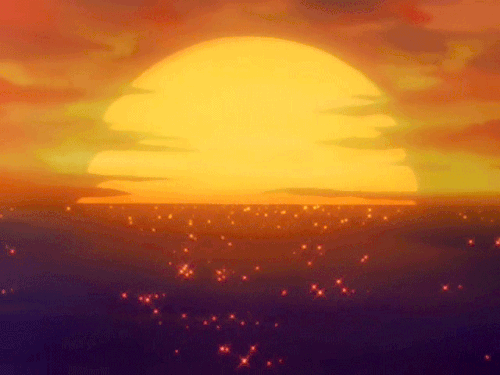
That's it. That's the list.
Feel free to add to it.
#long ass post#punkpunk#punk genre#definition#cyberpunk#steampunk#biopunk#nanopunk#solarpunk#lunarpunk#hopepunk#mythpunk#dustpunk#desert punk#atompunk#dieselpunk#teslapunk#arcanepunk#silkpunk#clockpunk#whalepunk#oceanpunk#dungeonpunk#sandalpunk#stonepunk
968 notes
·
View notes
Text

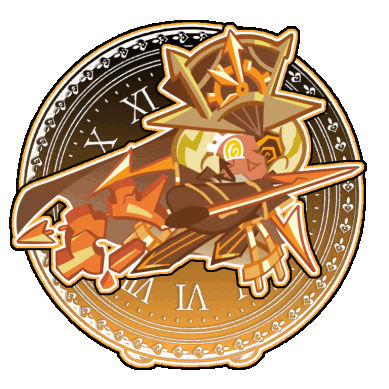


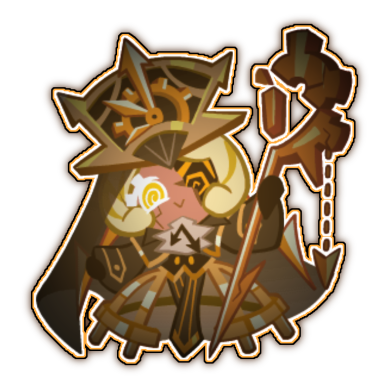
Timekeeper cookie rentry graphics !! ( completely self indulgent ! )
f2u - Reblog + Credit :3

#❝ PUSH UR TEMPER ❞ — POSTS#rentry graphics#rentry resources#rentry decor#rentry inspo#clockpunk#steampunk#timekeeper cookie#cookie run#cookie run ovenbreak#crob
259 notes
·
View notes
Note
I'd be interested in any dieselpunk or clockpunk recommendations you have, particularly if you play as some sort of inventor.
Theme: Clockpunk & Dieselpunk
Hello friend, I’ve got a decent number of Clockpunk or Dieselpunk settings, and while I think there might be be individual character options that allow you to play something of an inventor, I don’t think there’s anything in which you solely play as inventors. Perhaps some of my followers know of some though!






Tomorrow City, by Osprey Publishing.
Tomorrow City was one of the cities of the future, built to usher in a new age of prosperity, seizing upon scientific achievements at the dawn of the twentieth century. Then came the War. Radium-powered soldiers assembled, diesel-fuelled nightmares rolled off production lines, city fought city, and the world burned in atomic fire.
Tomorrow City still stands, an oil-stained beacon of hope, part-refuge, part-asylum. Beset by dangers from both within and without, a secret war now rages on its streets. Diesel-born monstrosities stalk the alleyways, air pirates strike from the wastelands, mad scientists continue their dark work, occultists manipulate the city’s strange geometry, and secret societies plot in the shadows.
Tomorrow City is a roleplaying game of dark science and dieselpunk action. Swift and simple character creation and an easy-to-learn dice pool system places the emphasis on unique personalities and the momentum of the plot. Join the Underground and fight the crime and corruption at the heart of the city. Sell your dieselpunk tech, occult knowledge, and sheer grit as troubleshooters for mysterious paymasters. Hunt down spies, saboteurs, and science-run-amok. As weary sky rangers, fringe scientists, and radium-powered veterans, you might be all that stands between a better tomorrow and no tomorrow at all.
This is a game that pools together your positive and negative character tags, has you roll for both and aim to come out on top. Gear is very important here, and acts as a great vehicle for communicating the kind of world that you’re living in. I don’t own this game so I can’t speak to much more than that, but if there is a big focus on gear, I’d assume that having a character that can create that gear or make it better would be fairly easy to make in this game.
Age of Steel, by Isolation Games.
Age of Steel is a dieselpunk roleplaying game set in the world of Neres; a world not unlike our own in the first few decades of the 20th century. Neres has just emerged from its first global conflict; the ‘Great War’ in which hundreds of thousands of men and women died in the mud and horror of the trenches.
Technology in Neres has taken a slightly different route to our own world; personal mecha powered by diesel engines are used for numerous applications from war to common labour; huge airships ply the airways; bipedal automata act as servants for the rich and gadgeteer inventors construct homemade ray-guns in their basement laboratories.
In the wake of the Great War, Neres is a hotbed of political scheming and economic growth. Industry and commerce have come to rule the world which, thanks to the airship, aeroplane and radio is rapidly becoming smaller. Little do the majority of people know but an ancient evil is at the heart of the conflict in their world. Eldritch monstrosities from before the dawn of time seek to unmake reality, aided by cults of insane worshippers.
Into this world come the heroes -the players- who are the only thing standing between the cosmic evil and all that they hold dear.
Age of Steel uses d6s as the base for their rules, and characters are built using a point-buy system, meaning that instead of character classes, you can custom-design your character as you see fit. I think that since everything about your character is customizable, there may be some options that would help you construct an inventor-like character.
One piece of your character is your backgrounds - that is, what assets your character has to pull from as they play. Some of these assets include Cash, a Job, a Reputation, and a Personal Vehicle. Since the release of the base game, the designer has also added a free supplement called Better Backgorunds, which also includes some more character options when it comes to assets.
Steel Horizons, by Wandering Pilgrim Games.
Steel Horizons is a Dieselpunk TTRPG set on the continent of Algara. It has been 43 years since the discovery of the powerful mineral, Pyricium, which jumpstarted technology ahead decades and began the 3rd Age.
In this new world, the nations of Algara have barely survived the Great War, fought over the precious Pyricium deposits, and now seek to rebuild themselves even greater than before with the might of their technologies and cultural advancements. Using the combined power of diesel fuel, pyric energy, and the brute strength of man, the world presses ever forward.
You play as a Wanderer, a traveller making their way across the land in search of their own legacy. By choosing your own Archetype and customizable Background, you can create the Wanderer you want to tell the best story!
This is a custom system that uses d12’s for all of your rolls. While Steel Horizons is meant to be a complete setting, the creator’s overarching goal appears to be a core set of rules that can be used in a number of different settings. Currently there’s the Quickstart Guide (linked in title) that is meant to bring you through character creation and gives you some example encounters, but you can also get the Lore Keeper Codex for the Hydra System, which is the base rules without setting details, as well as the Player’s Guide, which introduces new character options for you to play with.
Clocks and Punks, by Ikari.
You are misfits in the mega city Meccavena, dwelling in your precious hideout, the Sanctuary, looking for your next gig. Your gang leader, Archelle, has dosed into an endless sleep after she stole the Anomaly Device from the Clockmaker's tower. Now, it's your job to regroup and explore that crazy, conspiracy-infused, clockwork powered city, and maybe find a way to wake Archelle up!
Clocks and Punks is a rules-light, clockpunk inspired hack on the Lasers and Feelings RPG by John Harper. As is the standard for games of this type, your characters will enter play with a goal already in mind, but how they decide to go about achieving that goal is up to them.
If you want to create an inventor character you certainly can - there are Artificer and Alchemist roles that might fit that niche, and you can create a character goal that encourages you to create or invent. You can also make your character better at CLOCK tasks, giving them an advantage when performing tasks that require precision or technical aptitude.
This game is best for a group that wants a short session, or minimal bookkeeping. It’s probably also easier to run if you have experience playing ttrpgs before, just because there’s not a lot of room for GM guidance on a single page,
Flying Fortress, by Planet Gnome.
Flying Fortress is a trifold pamphlet RPG about pulp adventure, diesel punks, and airship pirates.
This is a hack of Into the Odd and Electric Bastionland by Chris McDowall, and should be compatible with any other Mark of the Odd games.
What I really enjoy about pamphlet games is that they provide a lot of neatly organized information that is easy to navigate. This game has your character sheet on one tab, rules on another, gear on another, and then information on the back for the person running the game - things like potential enemies, factions, and roll tables. There’s no particular inventor role per se, but there are Aristocrat and Mechanic options that I think you could tailor to be more about invention if you wish.
The biggest downside to this game is that it dedicates all of its space to game info, and leaves no room for world-building, so the setting you place yourself in is going to have to be crafted whole-cloth by the play group. Then again, if your GM is a natural world-builder, maybe that’s an asset rather than a downside!
Goblins in Shadow, by Color Spray Games.
GOBLINS IN SHADOW is a roleplaying game about goblin resistance and revolution in an age of elven oppression. It’s a world of clockwork and magic, of smoke and shadow.
Players will take on the roles of a cell of goblin revolutionaries, working to undermine the elves and humans who have conquered their homeland and built an empire on its corpse. They’ll advance their goals by taking on scores, missions that gather sympathy for their cause or take direct action against their oppressors, ending in a final attempt to assassinate one of the elven ministers ruling the city. To do that, they’ll need to avoid being caught by the Watch or the Hounds, the elite special police of the city; they’ll also need to balance their obligations to the various factions of the city, as well as their own personal obligations.
The rule of elves will be broken by goblins in shadow.
As a Forged in the Dark game, this will likely be familiar to anyone who has played Blades or similar games. The core of this game is about combat, and the setting around it is clockwork. If you want to play an inventor type character, there looks to be a playbook called The Hand, equipped for sabotage and front-lines engineering. Just through skimming the playbooks I feel like a lot of pieces of the world around you are baked into your playbooks - for example, the Hand might have been branded by an entropic form of goblin magic that allows you to invoke rapid decay or drain life. Now that’s evocative!
92 notes
·
View notes
Text
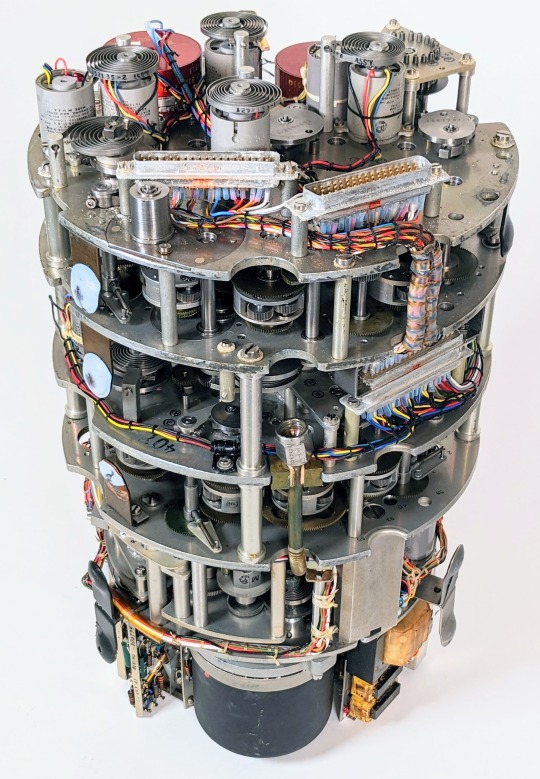
The Bendix Central Air Data Computer computes Mach number and other values from pressure inputs from pitot tubes. It uses rotating gears and cams for computation. Motors in synchro loops rotate the shafts to the right positions.
226 notes
·
View notes
Text
Punk Poll 2: The Re-Punkening
Once again, this isn't about which subgenre you think is the "correct" or "Most moral" one or even which one you'd like to live in the most, it's about which subgenre you find the most aesthetically pleasing/narratively interesting.
#And no I'm not including hopepunk bcause that concept's too fucking broad#steampunk#cyberpunk#silkpunk#dieselpunk#Casette Futurism#Biopunk#Atompunk#really i consider cassette futurism more of an aesthetic than a subgenre but *shrug*#clockpunk#it also took me a while to be convinced that clockpunk wasn't just a 'coal makes me sad' variation of steampunk#Nah it goes back earlier!#Too much of teslapunk falls either too far to steampunk or dieselpunk for me to consider it its own subgenre#but i didn't want to be like 'there are only two genders: steampunk or dieselpunk'#science fiction
617 notes
·
View notes
Text
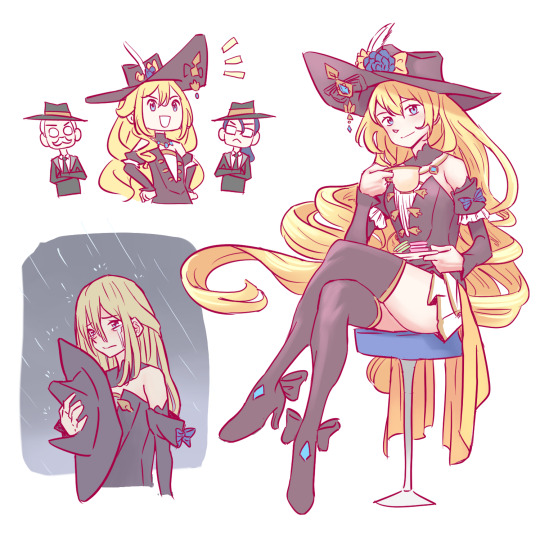
Navia my beloved
#genshin impact#anime#genshin fanart#genshin navia#navia#fontaine#spina di rosula#steampunk#clockpunk
74 notes
·
View notes
Photo


Light
#thought I'd introduce some of my OCs via comic. they're not even the main characters#OC#comic#cyberpunk#steampunk#she's actually a mash of that and#clockpunk#dieselpunk#cigarettes#smoking#my art
421 notes
·
View notes
Text
If cassette futurism and cyberpunk are complimentary, in that they can be separate or together, as are dieselpunk and decopunk, what is complimentary to steampunk? My first thought was "clockpunk," but I've never seen that as separate from steampunk. Clockpunk stuff always has steampunk stuff in the background, and steampunk always has keys, springs, and gears mixed in.
Is there some neo-victorian subgenre that I'm missing?
45 notes
·
View notes
Text
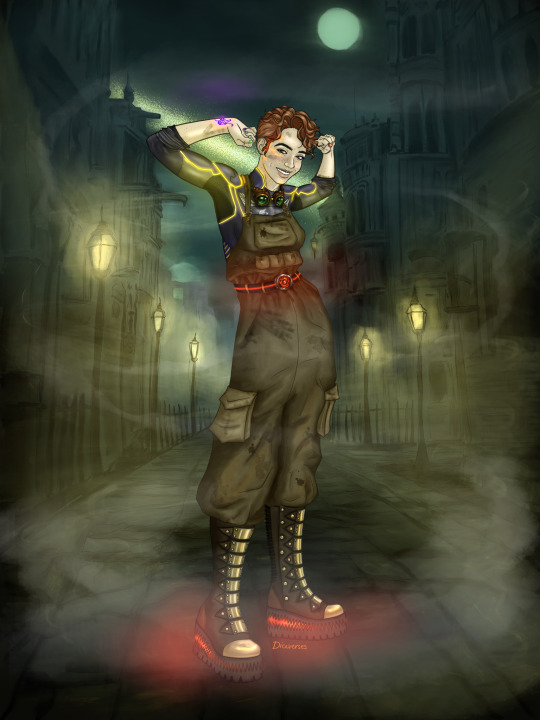
Kira Amory D’Cannith, my character for an upcoming campaign set in futuristic Eberron! Really excited to play her soon!
#art#digital art#dungeons and dragons#sketchbook pro#5e#dnd art#my dnd art#my dnd character#artificer#house cannith#eberron#dragonmarked#steampunk#cyberpunk#clockpunk#dieselpunk#fog#smog#mechanic#I love making glow effects#I also love drawing metal#this is my dream aesthetic#mark of making
37 notes
·
View notes
Text

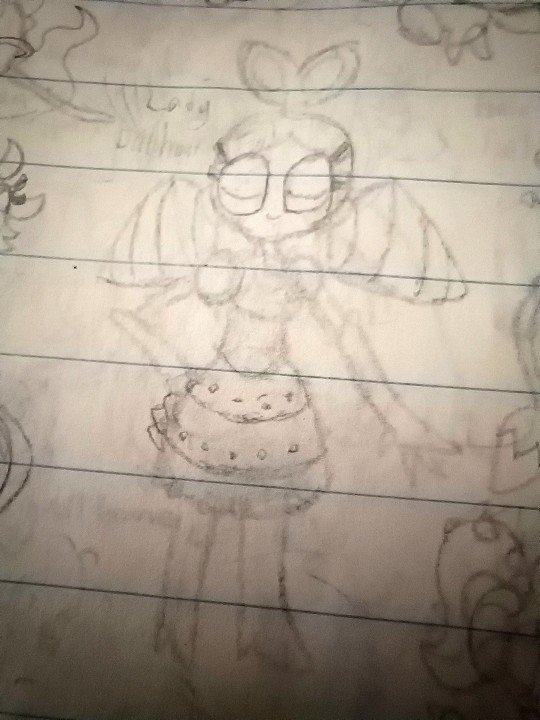
Redesigning a robot girl I made a long time ago
#my art#character design#cute#illustration#oc#robot#march of robots#drill#robot girl#steampunk#oc redesign#redesign#clockpunk
12 notes
·
View notes
Text
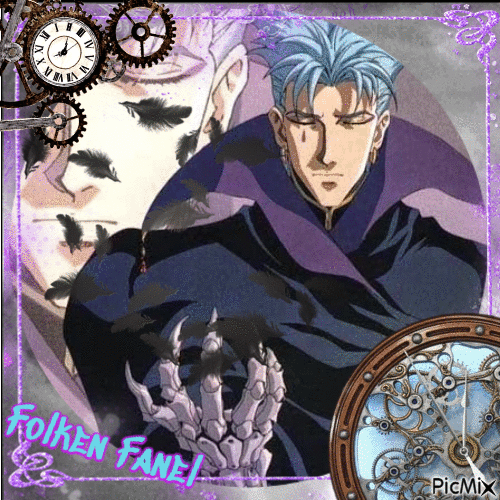
My latest Picmix GIF, this time in honour of the mysterious Folken Fanel. In this composition, the gears symbolise his association with science and engineering in Zaibach. The clocks represent how he knows his life will be cut short and that he is racing against time. The black feathers recall his black wings and the curse upon him. Folken is one of the most intriguing characters in the anime Vision of Escaflowne with his noble heart allied against his will to the evil forces of Zaibach. I find that he's also a sympathetic and accurate depiction of a depressed person in anime.
My Picmix composition uses official promotional art from the 1996 anime Vision of Escaflowne with digital edits.
#escaflowne#vision of escaflowne#tenkuu no escaflowne#anime#folken fanel#villian#anime villain#mad scientist#steampunk#clockpunk#thunderstorm#90s anime#90s anime aesthetic#90s shoujo#whimsigoth#gothic#depressed character#zaibach#picmix#purple and black#blue hair#biseinen#male character#clocks#black feathers#feathers#draconian#escaflowne characters#escaflowne fan art#escaflowne fanart
11 notes
·
View notes
Text

#intricate details#beautifully shot#hyperrealistic#sharp focus#64 megapixels#perfect composition#high contrast#atmospheric#moody#intricately detailed#oil on canvas#filigree#dynamic lighting#horror#gothic art#art deco#clockpunk
47 notes
·
View notes
Text
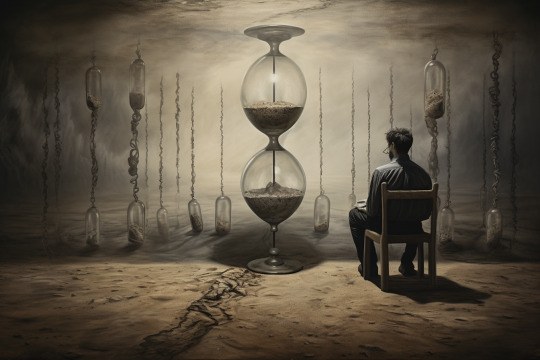


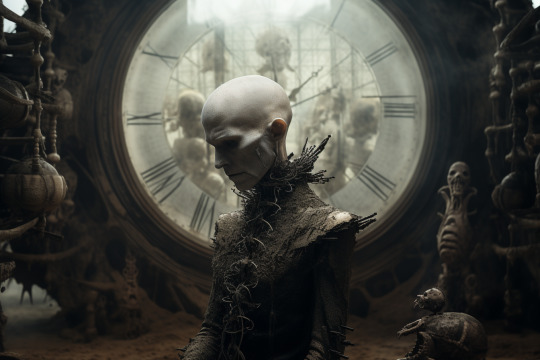
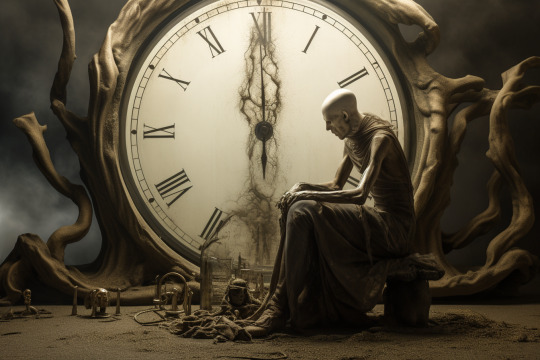
Time
#ai art#aiart#aiartcommunity#digital art#digitalart#fantasy#midjourney#scifi#scifiart#time#clockpunk
18 notes
·
View notes
Text

Hellraiser (1987) by Chris Malbon
#chris malbon#hellraiser#hellraiser 1987#lament configuration#lamarchand box#pinhead#hell preist#clockpunk#puzzle box#alternative movie posters#movie poster#poster art
122 notes
·
View notes
Text
I am looking for backers.
If you cannot back at this time, I ask you share this link around with your friends.
#justin kennon#original characters#captain gem and the green coats#original story#captain gem#green coats#self promo#kickstarter#pirates#steampunk#clockpunk#swashbuckling#swashbuckler#adventure#noval#novella#science fiction#scifi#crowdfunding#the coup
17 notes
·
View notes
